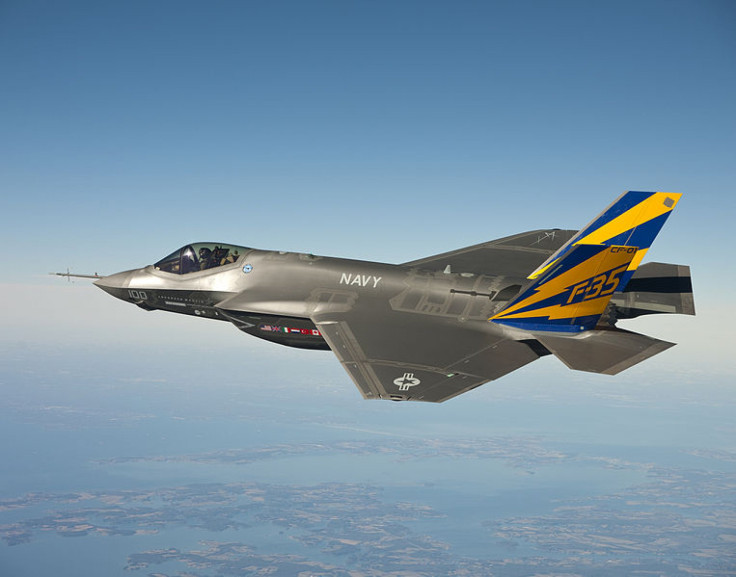Pentagon Cuts F-35 Fleet’s Long-Term Cost Estimate To $857 Billion From $1.1 Trillion

The Pentagon lowered the estimated cost of operating and maintaining a fleet of F-35 fighter jets over 55 years to $857 billion, marking a 22 percent decline from an earlier estimate of $1.1 trillion, due to budgetary pressure to lower spending without reducing the number of aircraft in the program.
The new estimate, which covers a fleet of 2,443 aircraft, which cost $392 billion in production costs -- a 68 percent increase compared to the production budget projection made in 2001 -- was based on 5,000 test flights of the aircraft over 7,000 hours, Lt. Gen. Chris Bogdan, the F-35 program's executive officer, told the Senate Armed Services Committee last month, according to a document that was made public on Wednesday, Bloomberg reported.
The multi-role, fifth-generation aircraft, which are the Defense Department’s biggest weapons program ever, are used by the U.S. Air Force, Navy and Marine Corps and are expected to form a vital component in the air power of allied nations over the coming decades, according to the Pentagon.
The Lockheed Martin Corporation (NYSE:LMT) is developing the fleet and has delivered 67 F-35 aircraft so far, generating about 15 percent of its revenues from the program.
In July, the U.S. Department of Defense had reached an agreement, reportedly worth $7 billion, with Lockheed Martin for the purchase of 71 more F-35 fighter jets at lower prices, which will allow the U.S. to buy as many aircraft as previously planned, despite the budget sequestration that has been in place since March.
“There is still work to be done, but these agreements are proof the cost arrow is moving in the right direction. We will continue to work with industry to identify areas for savings in future production contracts,” Bogdan had said at the time about the deal.
The Pentagon has been facing criticism in Congress over rising costs in developing the F-35 system, but Bogdan told the Senate committee that the defense department is making serious efforts to cut costs and to reduce the new estimate even further as the program matures, Bloomberg reported.
The Pentagon had tried to shield the F-35 program from the sequestration’s impact by entering into several contracts before the budget cuts took effect in March, and it has made it clear that it will try to protect the program from the $52 billion in cuts set for next year.
© Copyright IBTimes 2025. All rights reserved.






















